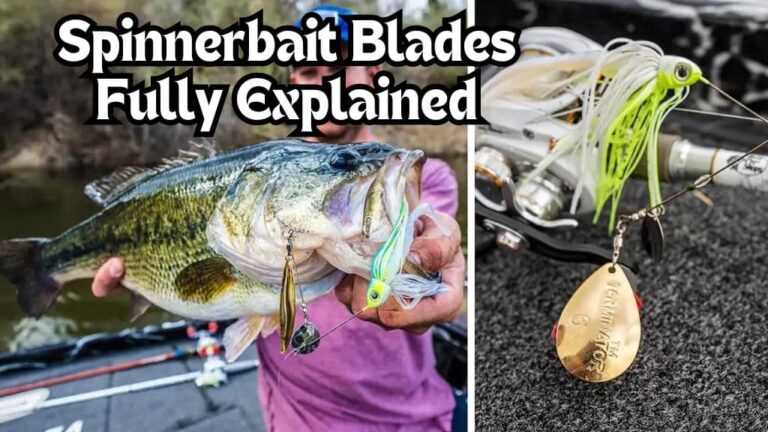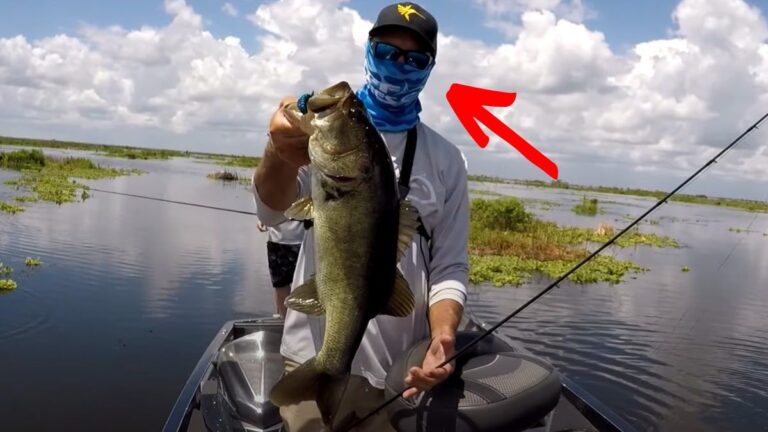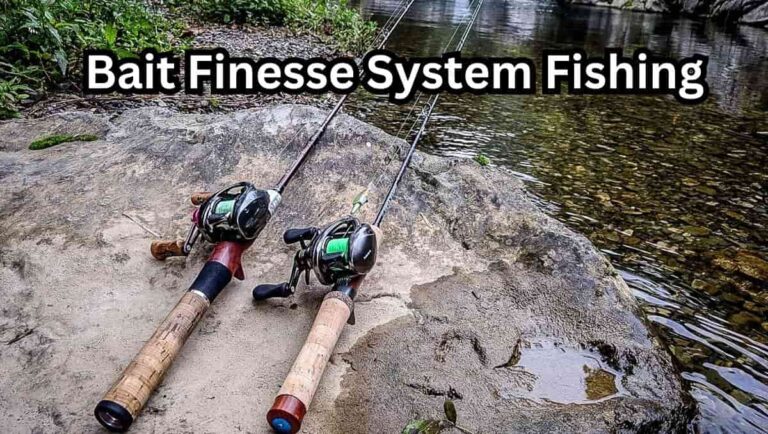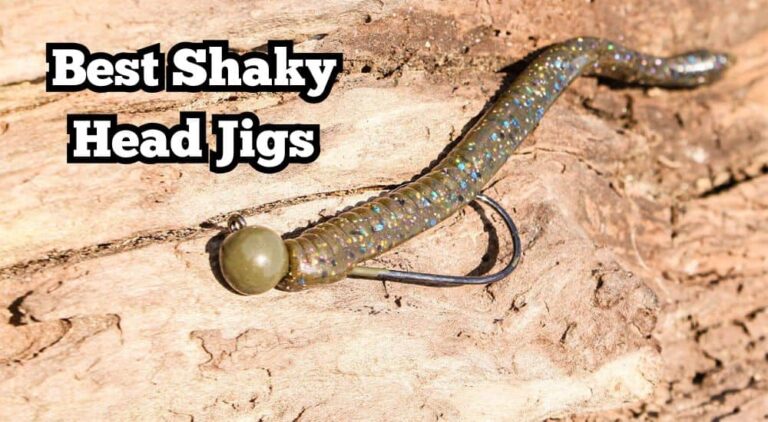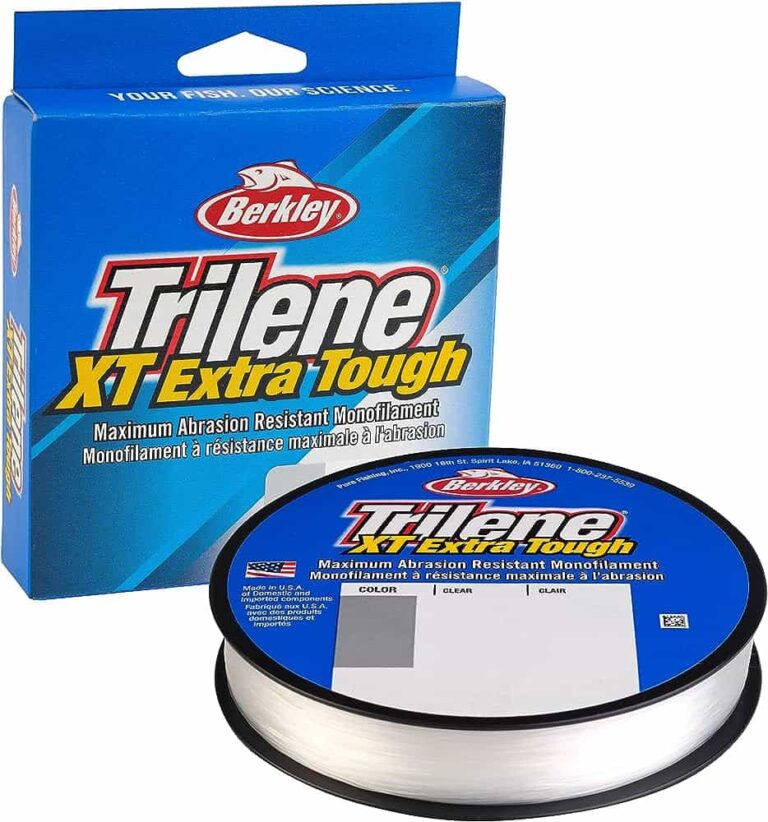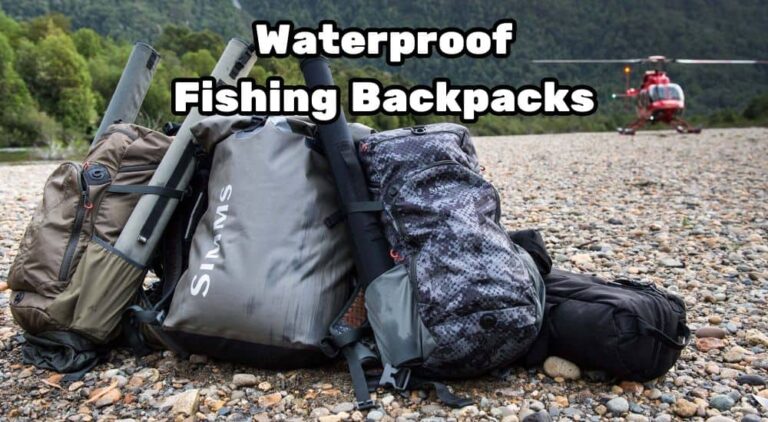Types of Fishing Rods: Simple Guide
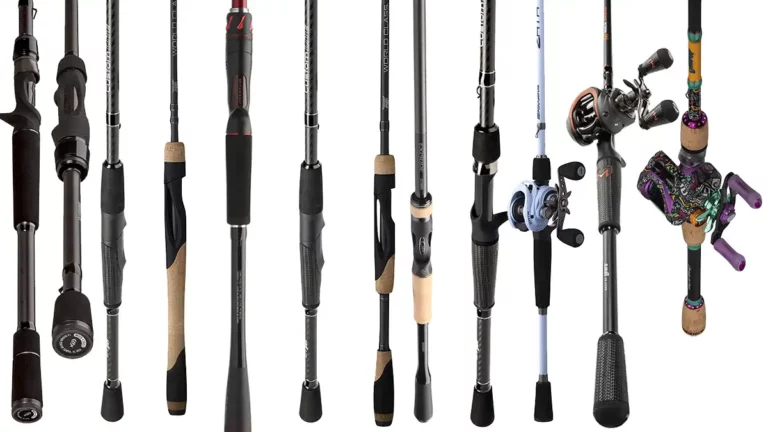
Ever wondered why fishing rods come in all shapes and sizes?
Well, get ready to unravel the mystery as we take a closer look at the exciting world of different types of fishing rods.
Whether you’re a seasoned pro or just starting out, understanding these rods is key to hooking that dream catch.
Fishing Rod Basics
Fishing rods are the unsung heroes of angling, each a carefully crafted tool designed for precision and performance.
Parts of a Fishing Rod
- Rod Blank: Main shaft, made of materials like fiberglass or graphite, affecting strength and flexibility.
- Guides and Guide Materials: Rings along the rod guiding the line, made from steel, ceramic, or advanced materials.
- Rod Tip: Sensitive end detecting underwater movements and bites.
- Reel Seat: Base where reel attaches, ensuring proper alignment for casting and reeling.
- Handle and Grip: Part you hold, with cork, foam, or rubber grip, even trigger grip for accuracy.
Rod Length
The fishing rod length is more than just a number—it significantly influences your angling experience. Let’s explore how different rod lengths impact your fishing outcomes:
- Short Rods (5-6 feet):
- Precision Casting: Shorter rods offer greater accuracy when casting, making them ideal for confined spaces or targeting specific spots.
- Vertical Jigging: Effective for techniques like vertical jigging where controlled movements are crucial.
- Medium Rods (6-7 feet):
- Versatility: Medium-length rods strike a balance between casting accuracy and casting distance, making them suitable for various techniques.
- All-Purpose: Great for beginners or those looking for an all-purpose rod for different fishing situations.
- Long Rods (7 feet and above):
- Casting Distance: Longer rods allow for longer casting distances, useful when you need to cover a larger area or reach deeper waters.
- Surf Fishing: Preferred for surf fishing where longer casts are essential to reach fish beyond the shoreline.
Fishing Rod Action and Power
When it comes to fishing rod performance, two key factors play a pivotal role: action and power. These characteristics define how a rod bends and handles weight, ultimately influencing your angling techniques and success.
Fishing Rod Action
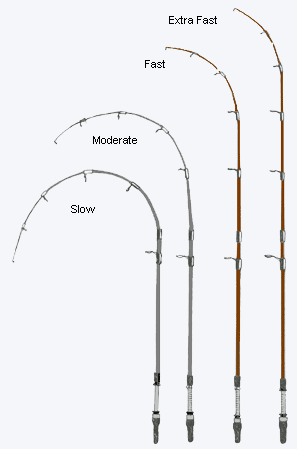
Fishing rods have their own unique personalities, and a significant part of this is their action – how they flex and respond to pressure. Here’s the breakdown of the three main types of rod action:
- Fast Action Rods:
- Quick Flex: The top third of the rod bends, making it responsive to even the slightest tug.
- Precision Casting: Ideal for accuracy and controlling lures with finesse.
- Heavy Lures: Works well with heavy lures as it quickly transmits power.
- Medium Action Rods:
- Even Bend: The middle section of the rod flexes, offering a balance of sensitivity and power.
- Versatility: Suitable for various techniques, making it a favorite among anglers.
- Cushioned Hooksets: Absorbs shocks during hooksets, reducing the chances of tearing the hook out of the fish’s mouth.
- Slow Action Rods:
- Full Bend: The entire rod bends, providing maximum flexibility.
- Delicate Presentations: Perfect for presenting light lures delicately to finicky fish.
- Small Fish: Best for smaller fish species due to its gentle hook-setting ability.
Whether you’re aiming for pinpoint accuracy, versatility, or delicate presentations, selecting the appropriate action can make all the difference in your fishing success.
Fishing Rod Power
Just like how superheroes are categorized by their strengths, fishing rods are classified by their power ratings. Power indicates a rod’s ability to handle different line weights and lure sizes. Here’s what each power rating brings to the fishing table:
- Light Power:
- Sensitive Touch: Designed for detecting the slightest nibbles and movements.
- Thin Lines: Paired with lighter lines, ideal for finesse techniques and small baits.
- Panfish and Trout: Suited for smaller fish species that require a gentle touch.
- Medium Power:
- All-Purpose: Versatile for a wide range of fishing situations and species.
- Balance: Strikes a balance between sensitivity and power.
- Casting Distance: Effective for casting medium-sized lures to moderate distances.
- Heavy Power:
- Muscle and Backbone: Designed for wrestling large fish and heavy cover.
- Strong Lines: Pairs well with thicker lines and heavy-duty lures.
- Big Game: Perfect for battling hefty fish like bass, pike, and catfish.
Selecting the right power rating ensures you’re equipped to handle the fish you’re after and the techniques you’re using.
Also Read: Best Ultra Light Fishing Rod and Reel Combos
Main Types of Fishing Rods
Just as different strokes create unique paintings, distinct fishing techniques call for specialized types of fishing rods.
Also Read: Best Fishing Backpack with Rod Holder
Spinning Rods
Spinning rods are known for their versatility and user-friendly design, making them an excellent choice for various fishing situations.
With the reel mounted below the rod, the spinning rod excels at casting light to medium-weight lures with exceptional accuracy.
The open-faced spinning reel allows for easy line management and reduces the chances of line tangling.
Whether you’re casting from a dock, boat, or shore, spinning rods are go-to options for a wide range of species, from panfish to bass.
Their forgiving nature, ease of use, and the most versatile type of fishing rod.
Baitcasting Rods
These rods are the weapon of choice for experienced anglers looking to achieve accurate casts and master the art of controlled presentations.
With the casting reel mounted atop the rod and a unique casting technique involving the angler’s thumb to control spool rotation, casting rods offer unparalleled control over lure placement.
This control, coupled with their ability to handle heavier lures and lines, makes a casting rod perfect for targeting larger and more aggressive species like bass, pike, and musky.
Casting rods often feature trigger grips that enhance accuracy during casting, while their robust build and power ratings enable them to tackle heavy cover and provide the backbone needed to haul in hard-fighting fish.
While they require a bit more practice to master, the rewards of using casting rods are well worth the effort for anglers seeking precision and power.
Also Read: Baitcaster vs Spinning Reel
Fly Rods
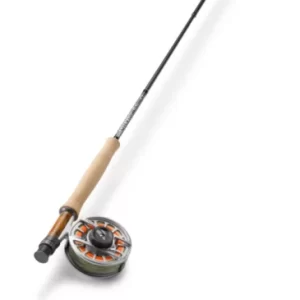
Imagine standing knee-deep in a serene river, the rhythmic dance of a fly line in the air, and a fly rod in your hand.
Fly fishing rods are the poets of the angling world, designed for a unique and elegant casting technique.
These fly rods are distinguished by their long length and light weight, allowing anglers to delicately present artificial flies on the water’s surface.
The casting technique, which involves pulling the line out of the fly reels yourself and using the weight of the line itself, requires finesse and practice to master but offers a rewarding experience.
A fly fishing rod can come in a variety of lengths and weights, each tailored to specific fishing conditions and target species.
There are even Tenkara rods for fly fishing that are very traditional and have very interesting designs.
From trout in freshwater streams to bonefish in saltwater flats, fly fishing rods are cherished by those who appreciate the artistry and connection between angler and fish.
Surf Rods
Surf rods are purpose-built to tackle the challenges of coastal angling, where casting distance and power are paramount.
These rods are characterized by their considerable length, often exceeding 10 feet, which enables anglers to cast beyond the breaking waves and reach the deeper waters where larger fish roam.
This is different from deep sea fishing rods which are short and stout. Both saltwater fishing rods are uniquely useful.
With the ability to handle heavy lines and weights, surf fishing rods can accommodate larger bait and lures, making them ideal for species like striped bass, redfish, and sharks.
Their robust construction and sturdy guides allow them to withstand the harsh inshore saltwater fishing environment and the forces exerted by powerful surf-dwelling fish.
Telescopic Fishing Rods

Telescopic rods are the ultimate space-saving solution for anglers on the move. These innovative rods feature collapsible sections that slide into each other, transforming a full-length fishing rod into a compact package that’s easy to transport.
Whether you’re hiking to remote fishing spots or exploring new waters while traveling, telescopic rods are your go-to companions.
While they offer portability, they also maintain performance with materials like fiberglass or graphite, ensuring sensitivity and strength aren’t compromised.
These rods cater to a wide range of fishing styles, from freshwater trout to saltwater panfish. As you telescope your rod into action, you’re not just casting a line – you’re casting a sense of freedom and exploration.
Ice Fishing Rods

Ice fishing rods are specially designed to conquer the unique challenges of fishing on frozen lakes and rivers.
These rods are notably shorter than traditional counterparts, typically ranging from 18 to 36 inches, allowing for ease of use in confined ice shelters.
The shortened length also facilitates detecting even the slightest nibbles from cold-water fish species like perch, walleye, and trout.
Ice fishing rods often feature highly sensitive tips that transmit subtle movements, making them essential for success in the frigid conditions.
Their compact nature and lightweight design make them a breeze to carry, ensuring you’re ready to face the ice-covered waters and immerse yourself in the captivating world of winter angling.
Trolling Rods
Trolling rods are the adventurers of the angling world, designed for a specialized technique known as trolling. These rods are built to handle the demands of dragging lures or bait through the water while you navigate.
With sturdy construction and often heavier power ratings, trolling rods are equipped to handle the resistance of moving through the water and the strikes of larger fish species like salmon, musky, and offshore gamefish.
The action of a trolling rod varies based on the target species and the type of lures or bait being used.
Some trolling rods have a more parabolic bend, providing a cushioned hookset for fish that strike while the boat is moving. Others may have a faster action to accommodate quicker strikes or to impart specific actions to the lures being trolled.
Glow in the Dark Fishing Rods
Glow in the dark rods are really helpful when fishing at nighttime. Many catfish love these rods because catfishing at night is very popular.
Many off-shore anglers also use glow in the darks for the same reason. Off-shore fishing trips are often very long and end up going into the night.
These rods make fishing in the dark a breeze.
Fishing Rod Materials
Behind every fishing rod’s performance lies a world of materials and meticulous construction techniques.
Understanding these elements unveils the essence of each rod’s unique character.
Fiberglass Rods
Fiberglass has long been a trusted ally in fishing rod construction. Known for its durability and affordability, fiberglass fishing rods are an excellent choice for beginners and anglers seeking reliability.
These rods have a forgiving bend and are less likely to snap under pressure, making them great for learning and handling various fish sizes.
Graphite Rods
Graphite, a lighter and more sensitive material, has revolutionized fishing rod design.
Graphite rods offer enhanced sensitivity, allowing anglers to detect subtle movements and bites underwater.
Their responsiveness makes them a favorite among experienced anglers who rely on precision and control for techniques like jigging and finesse fishing.
Composite Rods
Composite rods blend the best of both worlds – the strength of fiberglass and the sensitivity of graphite.
By combining these materials strategically in different sections of the rod, manufacturers create rods that cater to specific needs.
Composite rods are versatile, suitable for a range of fishing techniques, and strike a balance between durability and sensitivity.
Fishing Rod Maintenance and Care
Your fishing rod is more than just a tool – it’s a faithful companion that deserves proper care to ensure its longevity and peak performance. Here’s how to keep your fishing rod in top shape:
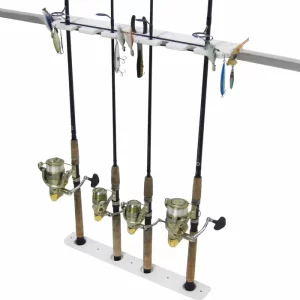
Cleaning and Storage
After each fishing trip, give your rod a gentle wipe-down to remove dirt, debris, and saltwater residue that can cause corrosion.
Make sure guides and reel seats are clean and free from sand or salt buildup. When storing your rod, avoid leaning it against walls or leaving it exposed to extreme temperatures, as this can lead to warping.
Guide Inspection
Regularly inspect guides for signs of wear or damage. Damaged guides can fray your fishing line, leading to breakage during critical moments. If you notice any issues, replace damaged guides promptly to prevent further damage.
Protective Rod Case
Consider investing in protective fishing rod sleeves or cases for travel and storage. These cases provide an extra layer of defense against impact, preventing accidental breakage during transportation.
Avoid High Impact
While fishing rods are designed to withstand the forces of fishing, avoid unnecessary stress by not using them for activities like poking or prodding objects.
Handle your rod with care, especially when landing fish, to prevent sudden jolts that could weaken the rod’s integrity.
Reeling this In
We’ve navigated the diverse world of fishing poles, uncovering their intricacies and strengths.
Once you have your rod and reel of choice spooled up, you are ready to head out onto the waters.
From the finesse of fly fishing to the power of surf fishing, each rod type has its own magic.

